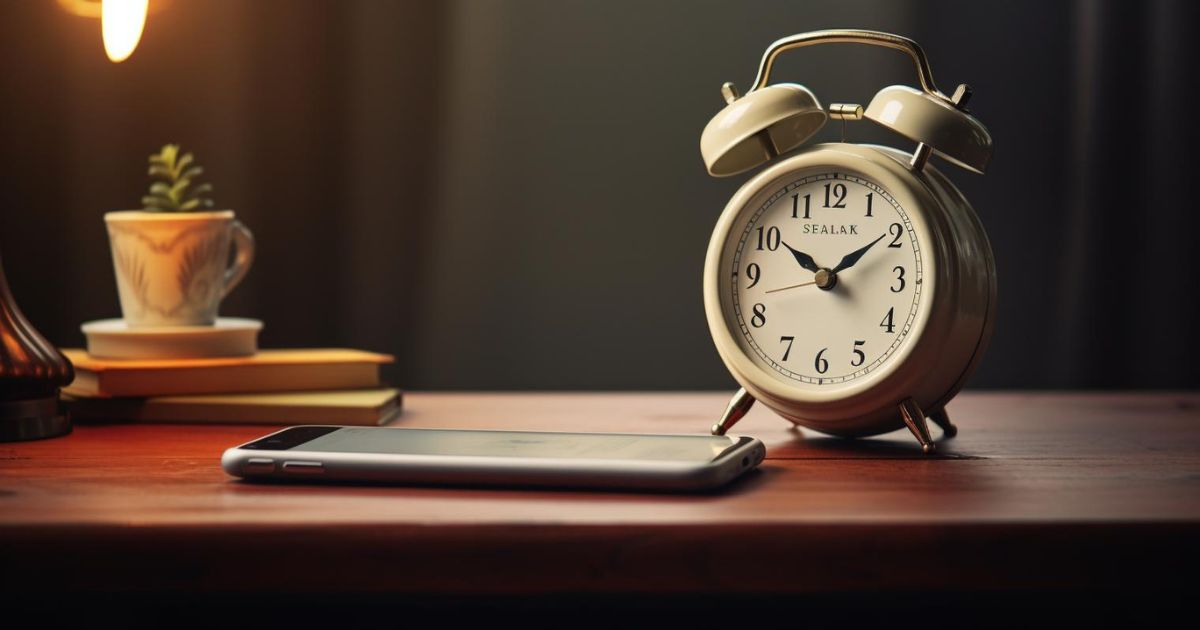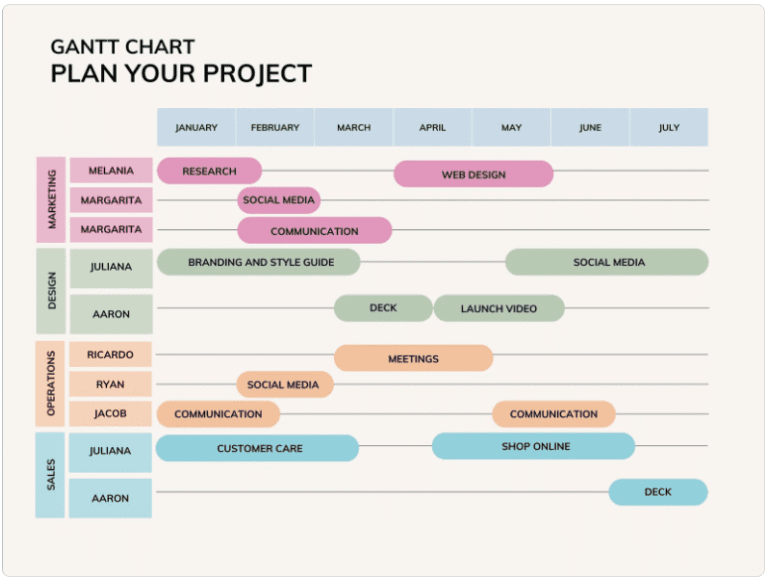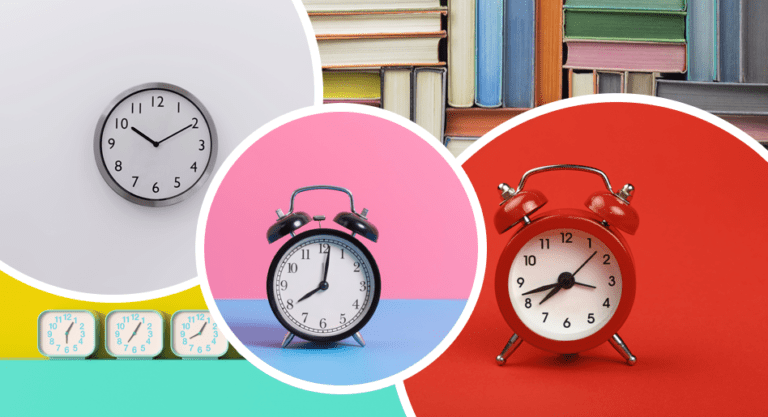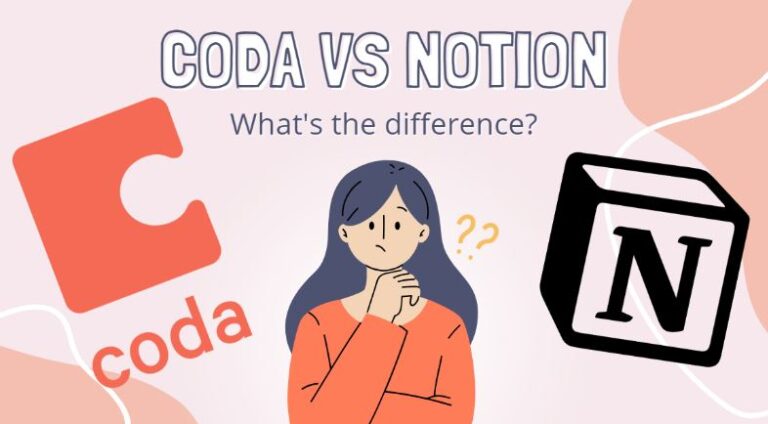7 Transformative Strategies to Break Free from Toxic Productivity

The first thing we need to do before really getting into this article, is acknowledge that you’re here.
I know how much courage it takes to admit to yourself that some of your habits aren’t the healthiest, and I sincerely want to commend you for being here.
You’re definitely not alone and actually, there’s no way I could’ve written this guide if I didn’t also struggle with navigating toxic productivity. And yes, I still do find myself dealing with it. The truth is, it’s a practice, not an instant fix. Progress is the goal – not perfection.

It can be tough to distinguish between toxic productivity and healthy productivity because toxic productivity is one of those things that’s so easily justifiable.
It’s even encouraged in our culture.
I can think of a handful of popular sayings off the top of my head that support this way of thinking:
“The grind never stops.”
“Work hard, play hard.”
“I’ll sleep when I’m dead.”
The perpetuation of this mentality is even woven into our unconscious speech patterns, which makes it particularly tricky to navigate.
It’s a cycle that’s hard to break, but understanding it is a big step in the right direction. So let’s dive in.
So What Exactly Is Toxic Productivity?
In the simplest terms, toxic productivity is the unhealthy obsession with being productive at all costs. It’s prevalent in our modern work culture where the lines between work and life blur, often leading us (and others) to value our work output over our well-being.
Can you tell the difference between toxic productivity and healthy productivity? It’s so important to know the signs for both.

Signs of Toxic Productivity
- Working Non-stop: Feeling compelled to work longer hours than necessary, often at the expense of personal time.
- Guilt During Breaks: Experiencing a sense of guilt or anxiety when taking breaks, as if stepping away from work is a failure.
- Unable to Enjoy Free Time: Finding that even during free time, you can’t relax or enjoy yourself because you’re preoccupied with thoughts of work.
- Ignoring Personal Needs: Consistently neglecting personal needs like adequate sleep, nutrition, and exercise in favor of work.
- Perfectionism: Setting excessively high standards and being overly critical of oneself, leading to a constant sense of dissatisfaction with one’s work.
If any of the above sounds familiar, can you imagine the healthy version of them?
Signs of Healthy Productivity
This is what the opposite of toxic productivity looks like:
- Balanced Working Hours: Maintaining a clear boundary between work and personal life, respecting your off-hours, and understanding the importance of downtime.
- Taking Breaks Without Guilt: Feeling comfortable and justified in taking regular breaks to rest and rejuvenate, recognizing that it boosts overall productivity.
- Enjoyment of Free Time: Being able to fully disconnect from work during free time, engaging in hobbies, and spending quality time with loved ones.
- Attending to Personal Needs: Prioritizing personal health, including regular exercise, proper nutrition, and adequate sleep, as part of a well-balanced lifestyle.
- Realistic Expectations: Setting achievable goals and acknowledging and celebrating successes, big and small, without being overly critical of oneself.
Keep these two lists in mind and check yourself every so often to stay in a good work life balance.
What Are the Root Causes of Toxic Productivity?
We can find ourselves stuck in the patterns of toxic productivity for a few different reasons and it’s important to know what the reason is. Knowing the root cause of toxic productivity is your best at turning the ship around.

Here are the most common causes of toxic productivity:
- Company culture: Workplaces that value overworking as a sign of commitment.
- Self-Imposed Expectations: Personal standards that push you to work beyond reasonable limits.
- Unrealistic Goals: Setting goals that are not achievable within a healthy work-life balance.
- Emotional Escape: Using work and productivity as a means to avoid confronting difficult feelings, memories, or personal issues. For some, staying perpetually busy becomes a coping mechanism to escape from facing unresolved emotional conflicts, past traumas, or challenging aspects of their personal life.
The last one I have a lot of personal experience with, so I’m going to give you a journal prompt that really helped me get to my root cause:
- Find a quiet space where you can reflect without interruptions.
- Begin by writing down a primary activity or responsibility in your work life. For example, “Why do I work long hours?” or “Why am I striving for this particular promotion?”
- After answering the initial ‘why,’ keep digging deeper. For each answer you give, ask ‘why’ again. Write down your response, then question that response. Continue this process, peeling back the layers of your motivations.
- As you progress, your answers might become more introspective and personal. This is a sign you’re getting closer to your core motivations.

Here’s an example of what it might look like (straight out of my diary!):
- Why do I work 40+ hours a week as a blogger?
- To make money.
- Why do I want to make money?
- To buy what I need and feel secure.
- Why do I need security and the ability to provide for myself?
- Security is a basic need, and I want to prove to my parents that I can succeed.
- Why do I want to prove my parents wrong?
- Their lack of belief hurt me, and I want to heal from that pain.
Ultimately, you might find that your real goal is inner peace.
Losing sight of this true purpose can lead you to toxic productivity. It’s crucial to keep your real ‘why’ in perspective to maintain balance.
The Impacts of Toxic Productivity
Physical and Mental Health Consequences
The relentless drive to accomplish more can lead to significant issues like workplace burnout and anxiety. And these mental strains are not solitary – they are often coupled with physical symptoms, as mind/body connection expert and author of “When the Body says no” Gabor Maté shares:
“Emotional stress is a major cause of physical illness, from cancer to autoimmune conditions and many other chronic diseases. The brain and body systems that process emotions are intimately connected with the hormonal apparatus, the nervous system, and in particular the immune system.”
Distortion of Self-Worth and Quality of Work
Beyond the tangible health effects, there’s a more insidious impact of toxic productivity: the distortion of self-worth.
When output and achievements are highly valued, your sense of self can become inextricably linked to your productivity. This distorted view can lead to a dangerous trap, one where the quality of your work is tied to your sense of worth.
You might find yourself measuring worth not by who you are but by how much you can accomplish, overlooking the value of simply ‘being.’
This might sound like some “woo woo b.s.,” but it’s been scientifically proven that how we perceive ourselves and our emotional well being are directly tied to our physical health, which people tend to care more about.
Neglect of Personal Health
One of the more visible signs of falling into the trap of toxic productivity is the neglect of personal health. This isn’t just about skipping the gym for an extra hour of work; it goes deeper.

It’s the gradual decline of habits that once kept you healthy and vibrant and maybe adding others that are harmful.
The once-prioritized healthy smile fades into dental neglect, and the lack of proper sleep, plus a caffeine addiction, leave visible signs like bags under your eyes.
Maybe you take the usual time for weekly meal prep and crank out a couple of hours of work instead.
It’s a slippery slope of changing priorities, and it shows.
The Digital Connection: A Double-Edged Sword
And let’s not forget how our world of non-stop digital connection feeds into this toxic cycle.
Studies are showing a concerning link between this non-stop work mindset and an addiction to our screens. The constant online presence, with endless emails and social media pings, amplifies the urge to do more.
It creates a loop of feeling the need to be ‘on’ all the time.
This digital overload not only fuels toxic productivity but also leads to potential addictions like social media and screen dependency.
Strategies to Combat Toxic Productivity
Even one of these would be a step in the right direction, but it’s probably a good idea to read the whole list to have some in your back pocket for when you can add another one to your routine.

- Setting Boundaries and Scheduling RestThe first step in combating toxic productivity is setting clear boundaries between work and personal life. This includes scheduling specific times for work and ensuring you stick to these schedules. Equally important is scheduling time for rest. Rest isn’t just sleep; it’s any activity that allows you to relax and recharge, be it reading a book, taking a walk, or just sitting quietly.
- Prioritizing Tasks and Avoiding OvercommitmentLearning to prioritize tasks effectively can significantly reduce the feeling of being overwhelmed. Not everything needs to be done right away. Use tools like the Eisenhower Box, also known as the productivity matrix, to categorize tasks by urgency and importance. This helps in distinguishing between what truly needs your attention now and what can wait.
- Incorporating Self-Care into Your RoutineSelf-care is a critical component in combating toxic productivity. This involves:
- Regular Breaks: Build short breaks into your workday. These shouldn’t just be coffee breaks but times where you step away from work mentally and physically.
- Quality Time with Loved Ones: Make sure to spend undistracted time with family and friends. These relationships are crucial for emotional well-being.
- Physical Activity: Engage in regular exercise. Physical activity is not only good for the body but also for the mind.
- Mindfulness and MeditationIncorporate mindfulness practices into your daily routine. Meditation can be particularly effective in reducing stress and improving focus. Even a few minutes a day can make a significant difference.
- Eye Breaks and Screen Time ManagementGiven the digital nature of our work, taking regular eye breaks is important. Practice the 20-20-20 rule: every 20 minutes, look at something 20 feet away for at least 20 seconds. This helps reduce eye strain from screens.
- Utilizing Technology for BalanceThere are several apps available that can assist in managing your work habits:
- Stretchly: This app reminds you to take microbreaks and stretch, helping to prevent prolonged sitting and screen time.
- EyeLeo: Specifically designed to prevent eye strain, it encourages users to take regular eye breaks with gentle reminders.
- Headspace: Offers guided meditation sessions and mindfulness exercises, suitable for both beginners and experienced practitioners.
- Calm: Known for its variety of meditation options, sleep stories, and calming music, ideal for stress reduction and improving sleep quality.
- Trello: A versatile app for organizing tasks and projects using boards and cards, great for both personal and team use.
- Asana: Designed for team collaboration but also effective for individual task management, Asana helps in setting priorities and deadlines.
Can you think of any other strategies for staying on track and away from toxic productivity? Let me know in the comments.
Seeking Professional Guidance
When the signs of toxic productivity become overwhelming, reaching out to a professional help is a wise and courageous step.
A mental health professional is equipped to help you manage the symptoms of toxic productivity and will also help you dig deeper to understand and address the root causes of your distress.
This guidance can be pivotal in breaking the cycle of toxic productivity.

Therapeutic Approaches to Managing Toxic Productivity
Various forms of therapy offer different approaches to managing toxic productivity:
- One-on-One Therapy: Personalized sessions with a therapist can provide a safe space to explore personal triggers and develop tailored strategies to cope with and overcome toxic productivity.
- Group Therapy: Participating in group therapy sessions offers a sense of community and understanding. Hearing others share their experiences with similar struggles can be incredibly validating. It reminds you that you’re not alone in this journey.
- Support Groups: Sometimes, joining a support group, which could be anonymous, provides a platform for shared experiences and collective wisdom. These groups can offer practical advice, emotional support, and a sense of solidarity in facing common challenges.
The Power of Sharing and Listening
There’s immense power in both sharing your own experiences and listening to others. Articulating your struggles can be a liberating experience. You unburden yourself from keeping it in and you can gain a lot of self-clarity just by verbal expression.
And listening to others’ experiences can provide new perspectives, coping strategies, and a sense of connectedness.
This process of sharing and listening fosters a supportive environment conducive to healing and growth and getting unstuck from the toxic productivity trenches.
Promoting True Productivity
Let’s go back to imagining what it would look and feel like to have a healthy relationship with productivity.

Setting Realistic Goals
True productivity begins with setting realistic goals and understanding and accepting that not everything needs to be resolved immediately. Having a good handle on the order or priority in your to do list in paramount to successful goal setting.
This approach allows for a more measured and thoughtful way of working, which is essential for long-term success.
Setting achievable goals reduces the pressure and stress often associated with unrealistic expectations.
Valuing Well-Being and Balance
The essence of true productivity lies in valuing wellbeing and work-life balance as much as, if not more than, mere output. It’s so true – I’ll say it again: Wellbeing and balance are equally if not more important to productivity than OUTPUT!
It’s so important to really understand that constant work without rest is counterproductive.
Encouraging a work mode that equally values mental and physical health leads to sustained productivity and a happier, more fulfilling life. And ultimately achieving your “why” or your reason for doing all of this work in the first place.
The Role of Mindfulness and Meditation
Incorporating practices like mindfulness, yoga, and meditation into your routine may not tick a box on your to-do list, but their impact on your work quality and focus is profound.

These activities:
- Reduce Stress: Lowering stress levels enables clearer thinking and better decision-making.
- Improve Concentration: Regular mindfulness practice enhances your ability to concentrate on the task at hand.
- Boost Creativity: Activities like yoga and meditation can unlock creative thinking, leading to innovative solutions and ideas.
Though they might seem unrelated to work, these practices have a direct effect on your professional performance. By improving your mental and physical state, they enhance your overall productivity in a holistic way.
If you incorporate one or some of these into your routine, you’ll be that much closer to saying goodbye to toxic productivity!
Redefining Productivity
True productivity isn’t just about what you produce; it’s about how you produce it.
It’s a perspective shift – a “reframe” from measuring success purely by output (toxic productivity) to valuing the process.
It starts with awareness and honing the skill of recognizing the signs. Couple this with realistic goal setting and incorporating self care practices that nurture your mental and physical health, and you’re off to a really good start.
And remember, if you’re experiencing toxic productivity, you’re not alone in this. So many of us are on the same path, seeking to find that sweet spot where work is both fulfilling and sustainable.
So if you’re ready to do the hard thing and take inventory of your work habits, I encourage you to take just one new thing learned from this article and implement it today. And make sure to bookmark this article as a guide to revisit when you need a reminder to stay committed to your well-being.
Here’s to a healthier approach to productivity, one that celebrates both your achievements and your happiness!
About the Author

Karen Nunez believes in the power of setting boundaries and creating a space for herself by being attuned to what truly matters – family life, self-improvement, and building a lasting legacy. She strives to pave a path that future generations can benefit from. Her blog is a trove of information to make better choices for your dental and oral health.
Here are some helpful job interview related blogs
- Tackling the final interview round
- How to answer ‘tell me about yourself’
- What are your career aspirations?
- Where do you see yourself in five years
- Why do you want this job?
- Strengths and Weaknesses In Interview
- Interview questions for managers
- Interview questions for freshers
- Tips to succeed in a job interview
- Do you need an Career coach / Interview coach?
Here’s some helpful career/leadership related blogs
- Careers– Agile Coach, RTE, Product Owner, Scrum Master, QA Manager
- Career development plan
- Career growth
- Project Management
- Managing Managers
- IT Career switch
- Software Engineering career path
- Agility, Agile Testing
- Remote leadership / Leadership traits
Other Productivity / Tools posts that may interest you
- Productivity
- Book summary apps – Headway App vs Blinkist vs getAbstract
- AI Writers: / Blogging – Jasper, Writesonic, Article Forge , Copy AI, Anyword, Writecream, Copymatic, Quillbot, Peppertype, Jasper AI (pricing) &
- Work From Home tools: Jabra
Author also writes at his Medium site.





